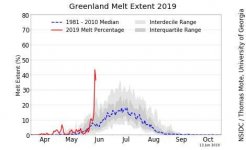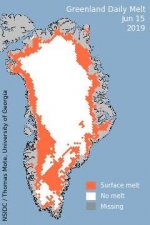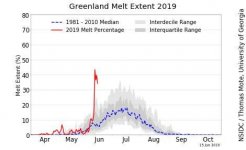M
moose eater
My wife, half-jokingly, half-seriously, has suggested that the sub-arctic may soon become North America's bread basket; probably the only reprieve our failing economy here might receive of any noteworthy amount in the future, from what is currently seen here..
Once upon a time, thousands of years ago, mastodon or mammoth (my confusion or lack of certainty, sorry) ate palm leaves where what was once referred to as the Village of Barrow and elsewhere in the arctic are.
Folks, for many years now, would 'tread current' in river boats, holding their position in the water, off/near banks that were deteriorating, in areas along the Yukon and other northern rivers, watching as river banks would collapse into the current, sometimes exposing ancient ivory tusks, then heading into the banks to extract the tusks.
Not an entirely safe prospect, as you can imagine the weight of silt or other banks caving in on a boat in current like that, and the possibility of it ending poorly, if persons aren't alert.
The related fossil ivory markets are gray to black; anything within high-water mark of navigable waterways is technically Federal turf.
But yeah, what has been cold for many centuries, was once a rich, tropical, region. Probably still harsh, but in different ways than what we have known.
Once upon a time, thousands of years ago, mastodon or mammoth (my confusion or lack of certainty, sorry) ate palm leaves where what was once referred to as the Village of Barrow and elsewhere in the arctic are.
Folks, for many years now, would 'tread current' in river boats, holding their position in the water, off/near banks that were deteriorating, in areas along the Yukon and other northern rivers, watching as river banks would collapse into the current, sometimes exposing ancient ivory tusks, then heading into the banks to extract the tusks.
Not an entirely safe prospect, as you can imagine the weight of silt or other banks caving in on a boat in current like that, and the possibility of it ending poorly, if persons aren't alert.
The related fossil ivory markets are gray to black; anything within high-water mark of navigable waterways is technically Federal turf.
But yeah, what has been cold for many centuries, was once a rich, tropical, region. Probably still harsh, but in different ways than what we have known.













